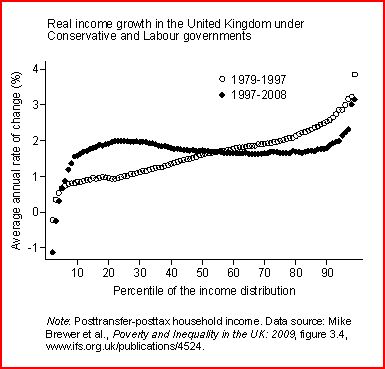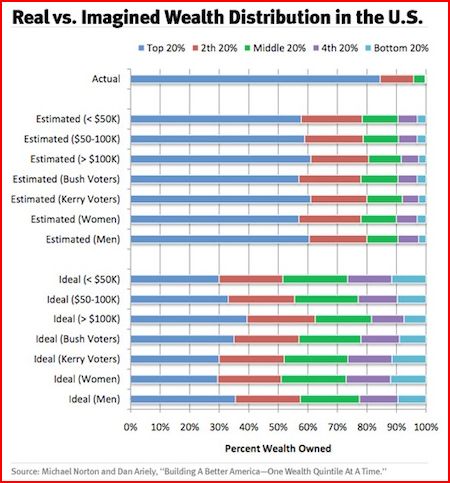Can’t we all just get along?
Here is Paul Krugman, right after I did a really nice post praising him:
Brad DeLong manfully takes on the efforts of various commentators to define away the paradox of thrift and redefine our current problems as somehow wholly monetary. As I see it, this is all a desperate attempt to cut and stretch things into a quasi-monetarist framework, for no good reason.
. . .
So what’s wrong with my “one model to rule them all”? Well, it doesn’t easily translate into anything that looks like monetarism “” for a good reason: when short-term interest rates are near zero, the distinction between the monetary base, which the central bank controls, and the much broader class of safe short term assets, which it doesn’t, more or less vanishes. That’s not a bug, it’s a feature; it says that when you’re in a liquidity trap, thinking in terms of the supply and demand for money is just not a helpful way to approach the issues.
Let’s start with some propositions that all us new Keynesians and quasi-monetarists can agree on:
1. If interest rates are 5% and the Fed announces a doubling of the money supply, and also announces that all the new money will be pulled out of circulation a month later, almost nothing will happen to prices and output.
2. If interest rates are 0% and the Fed announces a doubling of the money supply, and also announces that all the new money will be pulled out of circulation a month later, almost nothing will happen to prices and output.
3. If interest rates are 5% and they announce a permanent doubling of the monetary base, prices will rise sharply.
4. If interest rates are 0% and the Fed announces a permanent doubling of the money supply prices will rise sharply.
Monetary policy is never very effective if the injections are temporary, and (almost) always very effective if permanent. (Unless the liquidity trap is expected to last forever.) So the problem during a liquidity trap isn’t really that cash and T-bills are perfect substitutes, it’s more complicated.
So what’s the real issue here? Unfortunately, just like in the game “wack-a-mole,” a new objection pops up as soon as you answer the previous one. A little history might be helpful. For decades the new Keynesians have been driving the economy using a flawed interest rate instrument. They got away with it until rates hit zero. Now they are looking for answers. The quasi-monetarists are suggesting that the Fed increase the supply of base money (QE) and/or reduce the demand for base money (lower IOR and higher inflation targets.) The more progressive new Keynesians like Krugman support these ideas, but get bent out of shape when quasi-monetarists try to define our AD shortfall problem as essentially monetary, rather than simply an implication of the paradox of thrift. [BTW, I prefer autistic to Procrustean.]
So what are the issues that separate us?
1. The quasi-monetarists have higher expectations for monetary policy. We all agree the Fed could do a lot more. We all want them to do a lot more, but only the quasi-monetarists actually assume that the Fed is still driving the car, still determining NGDP growth.
2. Communication. The new Keynesians drove the economy off the cliff, yanked off the steering wheel, handed it to the quasi-monetarists, and said “OK, you drive smarty-pants.” But at the zero bound driving the economy requires a whole new form of communication. We can’t use interest rates and the markets aren’t used to anything else. Remember, only permanent money supply increases are effective. But since base demand is so unstable at low rates, we can’t really target the base credibly; it would leave prices too unstable. [That’s why we’re quasi-monetarists, not monetarists–we don’t assume stable money demand.] So we have to combine changes in the money supply with changes in the inflation target. We need to tell the public we’ll inject enough money to push prices X% higher over the next few years. The new Keynesian will respond “Aha, but that’s not monetarism, that’s new Keynesianism. The inflation target is doing all the work, not the money supply increase.” Yes and no. It is mostly the target, but not completely. That’s because the Keynesian liquidity trap model is slightly unrealistic in several ways:
a. The Fed can limit reserve demand by cutting rates on bank reserves to zero, or negative. In that case it’s all about cash held by the public. And the reasons people hold cash are different from the reasons they hold securities. Most cash is held for tax evasion and petty transactions–neither of which can be easily done with T-bills. So they aren’t quite perfect substitutes. Still, rates on T-bills could go negative enough to make them near perfect substitutes.
b. Cash is even less of a perfect substitute for other types of securities, which the Fed could also purchase.
c. Most importantly, QE is also a form of communication. If you are trying to convince markets that you are adopting a more expansionary monetary policy, it is easier to do if you both announce a higher inflation target, AND ALSO DO SOMETHING. Roosevelt understood this, which is why he adopted a gold buying program in late 1933. The amounts of gold purchased were far too small to have any macro effect, but nonetheless the program did move market prices. Why? Because it was a signal that FDR was soon going to do something which would be effective—permanently devalue the dollar. He bought gold at higher and higher prices, which was a signal to the markets about the likely future price of gold. QE would be Bernanke’s gold-buying program, only slightly effective on its own, but very powerful when combined with a higher inflation target. Even if the inflation target isn’t explicit, but merely hinted at.
It’s slightly annoying the way people like Krugman and DeLong imply their opponents don’t understand the paradox of thrift. Yes, if people try to save more, and rates fall, the real demand for base money will rise. And if the Fed doesn’t offset that then AD will fall. We do understand that. But we continue to insist the problem is fundamentally monetary because we see the Fed as being able to offset any shifts in public or private saving. And how can Krugman disagree with that on theoretical grounds? Hasn’t he just been hammering the Fed for not doing enough to boost AD? It’s a bit late to claim the Fed can’t do anything when rates are zero. Now he’s certainly entitled to claim that he doesn’t think the Fed would completely offset an attempt by the public to save more, or a program of austerity by the government, but that’s an empirical judgment. It has nothing to do with new Keynesian theoretical models that supposed “prove” there is a paradox of thrift at the zero bound.
The paradox of thrift models are only pulled out at the zero bound, because that’s when monetary policy is (allegedly) ineffective. So you have the bizarre spectacle of Krugman castigating the Fed every Monday, Wednesday, and Friday for not doing enough, and then on Tuesday and Thursday criticizing economists who don’t believe in the paradox of thrift—a model that only makes sense if the Fed can’t do anything!
As for Mr. DeLong, his reply to Nick Rowe’s comment is fine as far as it goes, but it doesn’t go anywhere near deeply enough into the problem. No one is asking the Fed to merely do a few desultory OMOs, and then imply they’ll soon be reversed. And at times he still seems to be struggling to free himself from the influence of 1930s Keynesianism, as when he claims the problem can’t be monetary, because interest rates on government bonds aren’t very high:
Thus we would expect a downturn caused by a shortage of liquid cash money to be accompanied by very high interest rates on, say, government bonds–which share the safety characteristics of money and serve also as savings vehicles to carry purchasing power forward into the future, but which are not liquid cash media of exchange.
I wish we could stop all this skirmishing on side issues, and focus on what really separates us–whether it is most useful to think of monetary policy driving inflation and NGDP growth, even at the zero bound. Or whether (as Krugman and DeLong seem to believe) it is more useful to think of monetary policy as passive and ineffective at the zero bound, and do macro analysis on that assumption. They’re entitled to that belief, but then I don’t see why the Fed should listen to their complaints that money’s too tight.
One final comment. Keynesians argue that only permanent monetary injections matter at the zero bound, and thus that it is pointless to increase the current money supply. But that’s true equally true of interest rates in normal times. If you raise rates 1% and announce they’ll be cut again a month later, almost nothing will happen. Woodford showed it’s all about the expected future path of policy. So this argument that current changes in the money supply are not important is always approximately true, and equally true of interest rates. Plan on quitting smoking? Heh, light up another cigarette! After all, it’s the long run path of your cigarette consumption that really matters. My response would be that there is no better time to start QE than right now. Remember, the longest journey begins with a single step.
OK, let’s all get together now and go after the real enemy—the hawks at the Fed.
BTW, Krugman says his model’s best because he predicted interest rates and inflation weren’t going to rise. Well I predicted interest rates and inflation weren’t going to rise, AND I was screaming at the Fed to ease money in late 2008. How does that call for action look now? Sometimes one needs a relentlessly single-minded focus, and if people consider that Procrustean, so be it.
HT: David Beckworth, TravisA



